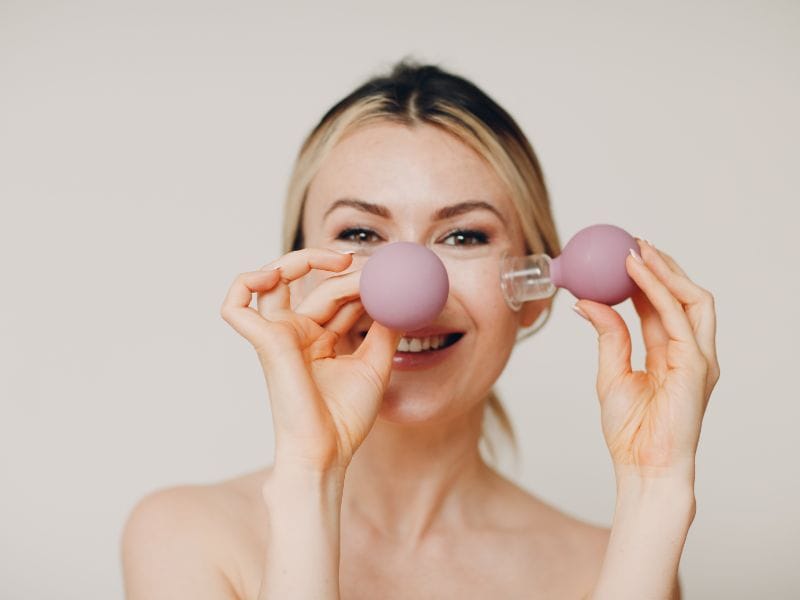
Hey there, skincare enthusiast! Ever heard of face cupping? If not, buckle up because you’re about to delve into an ancient practice that’s taking the modern beauty world by storm. 🌪️
Introduction to Face Cupping
So, what’s the deal with face cupping? Think of it like a gentle vacuum for your face. It’s an ancient technique, but recently it’s been making waves (quite literally) on the skin of many beauty aficionados.
The Origins of Face Cupping
Ancient China’s Healing Methods
Long before sheet masks and serums were a thing, traditional Chinese medicine was already onto something big. Face cupping is deeply rooted in ancient Chinese healing methods where they believed it could balance yin and yang on the skin. Cool, right?
Transition to Modern Beauty Routines
Fast forward to today, and this age-old practice has seamlessly woven itself into contemporary skincare. Why? Well, apart from being incredibly Instagrammable, its benefits are hard to ignore.
Benefits of Face Cupping
Natural Skin Revitalization
Your skin, like any other part of you, needs a bit of TLC. Face cupping offers a natural method of revitalization, without the use of chemicals or invasive procedures.
Boosting Blood Circulation
Ever tried to get that rosy-cheeked glow with blush? Face cupping promotes increased blood flow, giving you that naturally radiant look. No makeup necessary!
Collagen Production Enhancement
Collagen – the skin’s BFF. Face cupping can stimulate collagen production, leading to firmer, younger-looking skin. Who doesn’t want that?
The Face Cupping Process
What You’ll Need
All you really need is a set of silicone or rubber cups. And maybe some soothing facial oil to help the cups glide effortlessly.
Steps to Proper Face Cupping
- Cleanse and apply oil to your face.
- Gently squeeze the cup and place it on your face, releasing to create a suction.
- Move the cup around in gentle upward motions.
- Relax and enjoy the massage!
Potential Side Effects and Precautions
Common Mistakes to Avoid
While face cupping is relatively safe, overdoing it can lead to temporary bruising. Remember, gentle motions are key. No need to rush!
When to Consult a Professional
If you’re unsure about the process, or if your skin reacts negatively, it might be best to consult a skincare professional. They can guide you on best practices and even offer a session themselves!
The Science Behind Face Cupping
So why does this work? The suction from the cupping stimulates the blood vessels, increasing oxygen and nutrient supply to the skin. This leads to healthier skin overall. Plus, the gentle pulling action helps in lymphatic drainage, potentially reducing puffiness.
DIY vs. Professional Sessions
Making the Right Choice for Your Skin
While DIY sessions can be convenient and cost-effective, professional sessions ensure the right techniques are used, minimizing any potential side effects.
Conclusion
Face cupping is more than just a fad. It’s a blend of history, science, and beauty that offers a natural approach to radiant skin. Next time you’re thinking about a spa day, why not give face cupping a try?
FAQs
- What is the best oil to use for face cupping?
- A lightweight, non-comedogenic oil like jojoba or rosehip is ideal.
- How often should I practice face cupping?
- Once a week is a good starting point for most people.
- Is face cupping painful?
- Not at all! It should feel like a gentle massage.
- Can I do face cupping if I have acne?
- It’s best to avoid areas with active breakouts. If in doubt, consult a skincare professional.
- How long do the results from face cupping last?
- With regular sessions, the results can be long-lasting. However, the immediate effects might fade in a few days.
